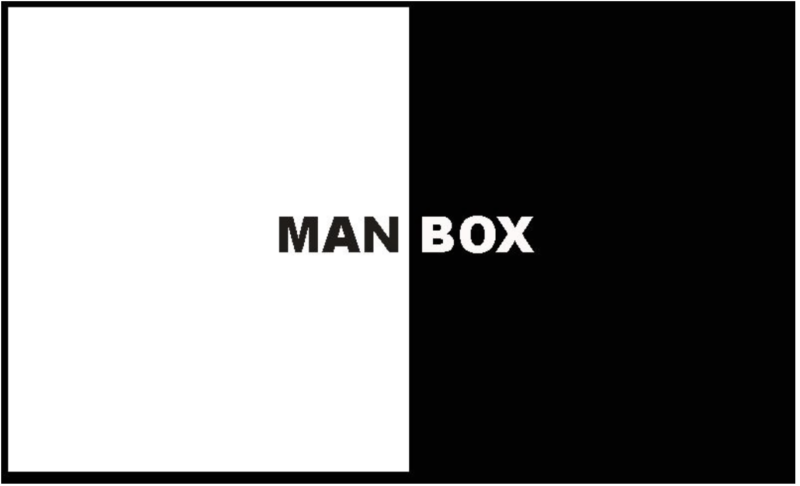5 Science-Based Solutions to Your Productivity Problems

Nora Roberts knows a thing or two about productivity.
As a best-selling author, she’s written over 225 books since the early eighties, which comes out to roughly five or six books a year. Her penchant for quality-driven productivity has led to her books spending hundreds of weeks on the New York Times bestseller list and over a hundred of those weeks at number one.
Roberts says that she can write as much as she does because she does it every day — it’s her full-time job. Thankfully for Roberts, she happens to love her job, and what’s more, she loves staying in:
That’s not the only way to approach success and productivity, however, and for the extroverts among us, that might give you some relief. You don’t have to become a hermit in order to be successful — sometimes it’s just about what you focus on while you work, and what you don’t. Take Steve Jobs, for example, who really understood the value of saying ‘no,’ even when the proposals were interesting to him:
Throughout history, famously successful people have implemented productivity practices that we still turn to today. Benjamin Franklin is another great thinker we can learn from: he woke up early every day to bathe, have a hearty breakfast, and go over his schedule. By 8 a.m., he was ready for a productive day, having already taken care of the menial details of his life — and their potential distractions — well before his scheduled start time.
In many ways, productivity is all about how and when you work — how you find that elusive “flow.” I learned years ago that I work most fluidly in a slightly chaotic environment, such as the university’s coffee shop. As a student that was where I produced my best writing; now, I use A Soft Murmur or one of my favorite dreamscapes to set the mood for whatever I happen to be writing, and it throws me right into my flow state — just like the good ol’ days.
I used to think it was as simple as that — just find the flow and the work will come. As it happens, my idea of a flow state might have been explained pretty effectively by science. It’s possible that I could have just been tapping into my body’s natural biological rhythms and not, as previously assumed, my creativity.
This is good news. The idea that you can use biology to help you create what you need to create without relying on inspiration means that you can actually boost your productivity with a few small changes in your routine. That really lets your creative genius off the hook!
If you want this to be your most productive year ever, let’s delve into why productivity is so deeply rooted in science — and even more so in our brains.
The Science Behind Productivity

Image by Lauren Hall
We see top-tier productivity on this platform, Medium, every day. The best of the best post articles at least once a week, and the top performers generally publish daily. Tim Denning, for example, posts at least ten quality articles per week, and that’s not including his newsletters or social media threads — of which there are many.
So what’s the secret to achieving this level of creative genius? To find the answer, we can turn to science.
Willpower
At first glance, you might assume that people like Tim Denning are bubbling over with willpower. It makes sense; he seems to be so full of things to say and content to create, judging by the volume of quality work he pumps out, that willpower seems an obvious attribute.
According to research, however, willpower alone just won’t cut it when it comes to productivity, and that’s due to a little feature in our brains called “ego depletion.”
Our brains are curious little creatures, first providing us with a boost of drive and excitement when faced with big projects, only to fill us with doubt and an immense fear of failure when the going starts to get tough. That’s where ego depletion comes into effect, and our willpower — once so powerful and sturdy — crumbles into ash.
This happens because willpower is actually an exhaustible resource, and the more you fight against that fact, the more burnt out you’ll become. That’s why it’s important to learn how you can effectively spend that energy by working with — not against — your body’s natural rhythms.
Energy
Energy is your productivity fuel.
I won’t bore you with the importance of the right amount of sleep — something we probably all struggle with on some level, anyway — because we already know. The kind of energy I’m talking about here can be described with a simple study…
On violinists.
It’s okay — you don’t have to be a violinist to understand this demonstration. Simply put, during the study, elite violinists performed better overall when they spent less, but more deliberate, time practicing in scheduled sessions than they did by merely playing for several hours at a time.
This extremely intentional practice was a better use of their energy.
For us non-violinists, the study shows that when we give our all in shorter bursts of genuine work, we naturally procrastinate less and get more done overall than we would by slogging away for hours on end. That’s because, as previously mentioned, our willpower is in a shorter supply than we thought, and we can’t run on empty.
At least, not very effectively.
So if our willpower is an exhaustible resource, what’s the way forward for a more productive year?
Good habits. That’s it. Studies show that maintaining good habits and a relatively strict schedule with multiple breaks is the best route to success, especially when willpower can’t be relied upon.
Now all you have to do is make a habit out of forming these good habits, and the best way to start anything is at the beginning. The first hurdle is simple, but big — you have to actually start.
Productivity 101
#1 — Put off Procrastination
Research shows that by merely getting started on those big projects (especially when you break them into itty-bitty, bite-sized pieces first) you’re more likely to actually complete them.
It sounds obvious — you’ll never finish something you don’t start in the first place! It’s still a vital step when avoiding procrastination, though, and the best way to start is to schedule that first step of your project.
Your work — your schedule — needs to become a habit, otherwise, you’ll put it off forever.
Dr. BJ Fogg, a Stanford University Researcher and author of the book Tiny Habits, explains how easily habits can be formed:
You begin by setting a goal — let’s use writing as an example. Maybe my goal is to write one article every week for six months. I have to start somewhere, but I don’t want to write them all at once, do I? I also don’t want to start off by declaring, “I’ll write one this week, and then two the week after that, then three,” and so on, because no one can write several hundred articles in one week — unless they’re an AI.
And I doubt the AI articles would be quality work — at least, not yet.
But you have to start somewhere, and it’s better for your goals to be less lofty when you do. Set the bar reasonably low, because otherwise the prospect of failure is too great, and statistically, you won’t finish what you’ve started.
Start with just one tooth. Anything extra is just that — extra.
#2 — Schedule Your Breaks (and Don’t Skip Them)
If you work a nine-to-five job, you probably know that most employers allow time (sometimes paid) for regular breaks.
Where I used to work, I was paid for my hour-long lunch break and two fifteen-minute coffee breaks. I wasn’t the only one who halved her lunch hour and skipped those coffee breaks — there was just too much work to do. I did the math one day after I left, and I gave my company roughly 3,120 hours of my time without pay. That’s over 80 weeks of free labor.
Stupid.
It’s especially stupid because I probably would have produced the same amount of work had I just applied myself more during those regular work hours and taken full advantage of those breaks.
That’s because I, like you, am a human being, and as such, I run on all kinds of biological rhythms — in particular, on ultradian rhythms.
Remember the study with the violinists? They were following a rigid yet forgiving schedule that allowed for many breaks and peaks of productivity, and that more closely syncs up with the body’s natural energy cycles — or, the body’s ultradian rhythms.
And when you frame it that way, it just makes good sense to follow suit.
According to research, splitting your day into focused sessions of 90 minutes or so followed by a few 20-minute breaks, will ultimately lead to more focused productivity and more energy:

Courtesy of Sparring Mind
In some ways, it seems counterintuitive, especially as a “creative” — I was always under the impression that creators and creative types worked when inspiration struck, regardless of the time or day.
But when it’s your job to not just create, but to create a certain amount of quality content within a deadline? You can’t rely on moods and whims.
#3 — Set Deadlines, Even if You’re the Only One Tracking Them
Speaking of deadlines, make some for yourself.
If you are employed by a publication or firm, chances are you’re familiar with deadlines and their importance, but if you freelance, your deadlines are likely to be a bit more fluid.
That might not be the best way forward, however, if you want a more productive year. I can speak from experience: I began freelancing full-time two years ago when I had my second baby, and I tried writing when he took his multiple, unscheduled naps (or “crap naps” as I used to call them — he only slept for twenty-minute spurts for the first six months of his life, and those spurts were all over the place.)
Sure, I wrote a fair bit during those days, but the quality of my work wasn’t what it could have been, since my bursts of work were so randomly spaced and timed. I didn’t really take breaks, either, because newborns need constant attention, so when he was awake, I wasn’t writing but I wasn’t “taking a break” either. I definitely wasn’t working with my body’s natural cycles, because he didn’t nap for ninety-minute stretches, and my work likely suffered as a result.
Also, you’re “supposed” to nap when your baby naps, so I did that part wrong, too. Like most mothers.
Now, I operate on a stricter schedule; I set my alarm to have time in the morning to write my morning pages and start my writing day, and I’m much more productive when I do.
(Do you write your morning pages? You should.)
No matter how you schedule your work day, try to iron out something that syncs up with your body’s natural biological cycles — it’s bound to bump up your productivity.
#4 — Hold Yourself Accountable
Have you ever tried to lose a few pounds? A common tactic to help you do that is to track what you eat in a day, and it’s a proven way to keep yourself accountable for what you put in your gob.
The same tactic can be applied to your productivity. As you go about your (now beautifully scheduled) day, jot down your accomplishments. For instance, if you were able to finish some preliminary research and make an outline for your project in the early hours of your day, write that down. Do the same for every session of work throughout your day, and by the end of that day, you’ll be able to see what you’ve accomplished in that space.
This is not only a great boost to your productivity, as it’s likely you will try to maintain that flow the following day, but it also gives you an idea of reasonable expectations for the work you are capable of day to day. This is an absolute must if you have a client who needs a timeline from you (spoiler alert: most clients need a timeline.)
#5 — Stop Multitasking (You Suck At It Anyway)
According to a study done by Jason M. Watson and David L. Strayer at the University of Utah, only 2.5% of us are able to multitask effectively.
I’m bad at math and even I know that’s not great.
We’re wired to be “ mono-taskers” anyway, so don’t fight it — roll with it. Since multitasking is really just task-jumping, our brains can’t keep up and we end up being less efficient than we would have been had we just focused on one task at a time.
Instead of trying to tackle eight projects at once, try becoming an expert mono-tasker. Take surgeons, for example, the idea of a multitasking surgeon is actually a little bit terrifying! Thankfully, surgeons do the very opposite — they are expert mono-taskers. They complete a series of procedures one by one, and the process can take multiple hours!
But it’s a process that saves lives every day because there is zero room for error.
The world’s most successful people share a few things in common, and if we hope to be successful too we should try to emulate them. Because, they focus on one task at a time, which makes them more effective and reduces the margin for error. They map out their days so that they keep a steady flow of work (and inspiration) going. They work in bursts and take breaks. They can be confident in setting their goals because they know what they can accomplish in a predetermined amount of time.
They are professionals in productivity.
You can become a professional too — you just have to reframe your thinking. It’s about quality, not quantity. It’s about taking that first step and beginning. It’s about taking your breaks. It’s writing down what you’ve accomplished. It’s setting reasonable goals and crushing them every day. It’s breaking your work into small, manageable chunks and focusing on them one at a time.
Productivity isn’t complicated. There isn’t some magic well of creativity and willpower that we can dip into and soak up — it’s just science. It’s learning about the way our brains work, and if you can take advantage of that knowledge and effectively use the time you have, you’ll achieve Nora Roberts’ level of productivity. You’ll find the focus that Steve Jobs had. You’ll master your schedule like Benjamin Franklin.
All you have to do now is start.
—
This post was previously published on ILLUMINATION.
***
You may also like these posts on The Good Men Project:
 White Fragility: Talking to White People About Racism White Fragility: Talking to White People About Racism |
 Escape the “Act Like a Man” Box Escape the “Act Like a Man” Box |
 The Lack of Gentle Platonic Touch in Men’s Lives is a Killer The Lack of Gentle Platonic Touch in Men’s Lives is a Killer |
 What We Talk About When We Talk About Men What We Talk About When We Talk About Men |
Join The Good Men Project as a Premium Member today.
All Premium Members get to view The Good Men Project with NO ADS.
A $50 annual membership gives you an all access pass. You can be a part of every call, group, class and community.
A $25 annual membership gives you access to one class, one Social Interest group and our online communities.
A $12 annual membership gives you access to our Friday calls with the publisher, our online community.
Register New Account
Log in if you wish to renew an existing subscription.
Need more info? A complete list of benefits is here.
—
Photo credit: iStock
The post 5 Science-Based Solutions to Your Productivity Problems appeared first on The Good Men Project.
